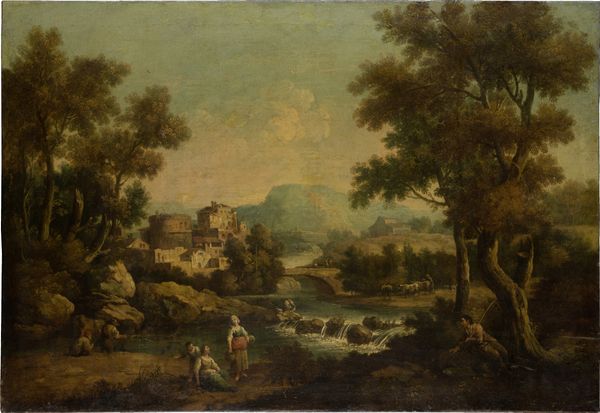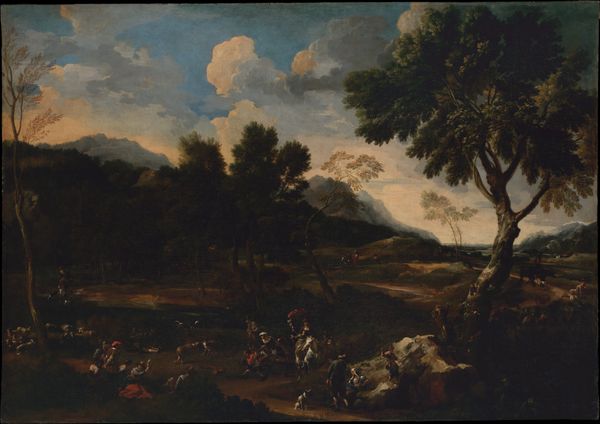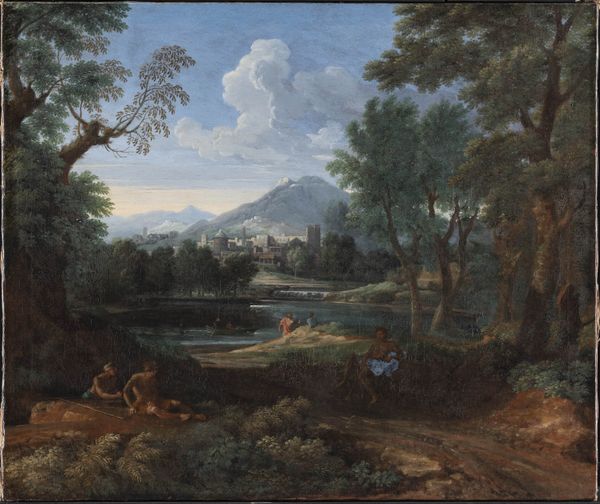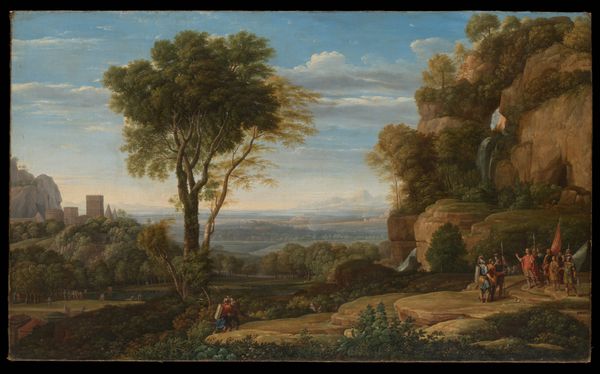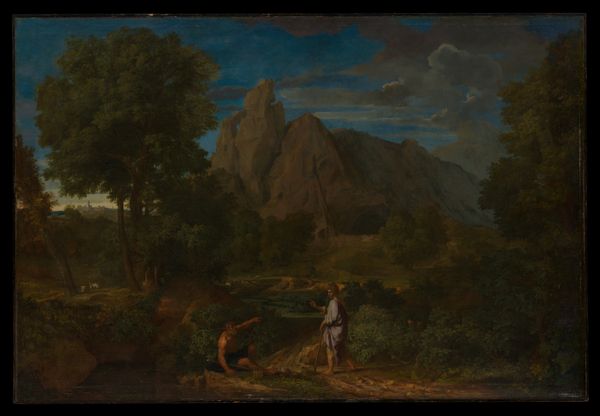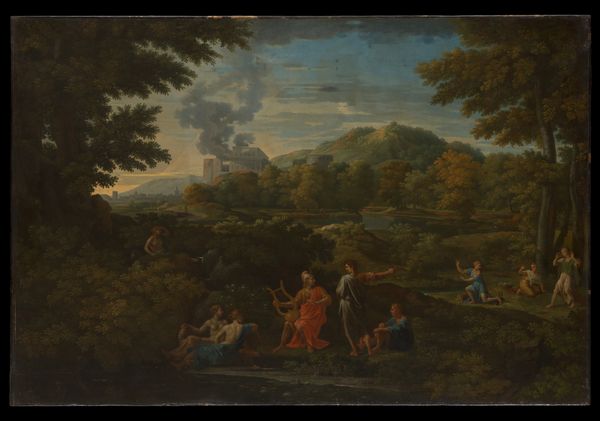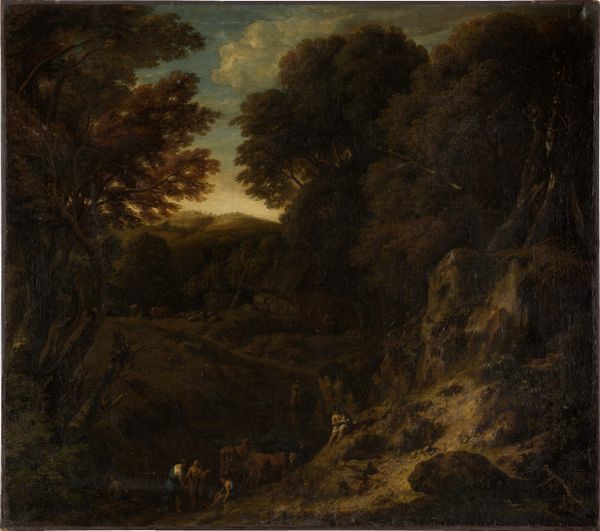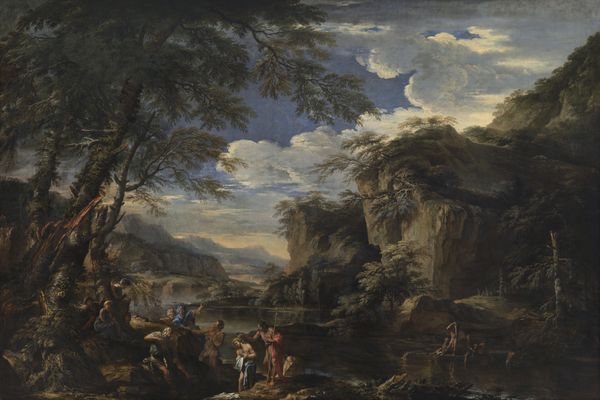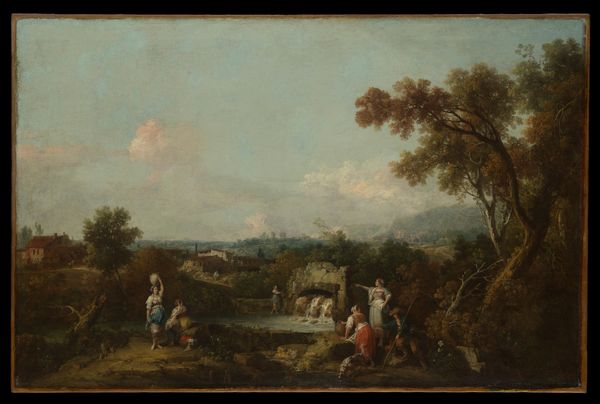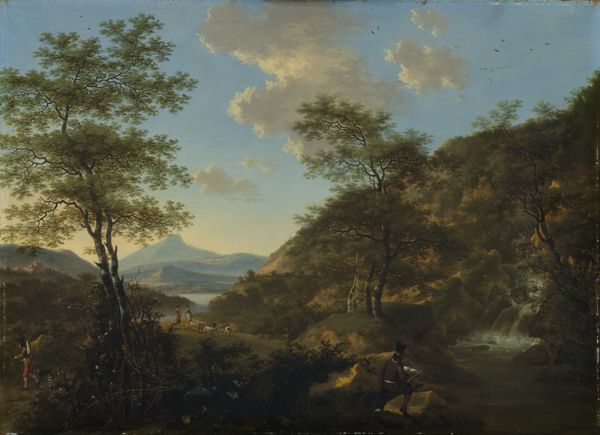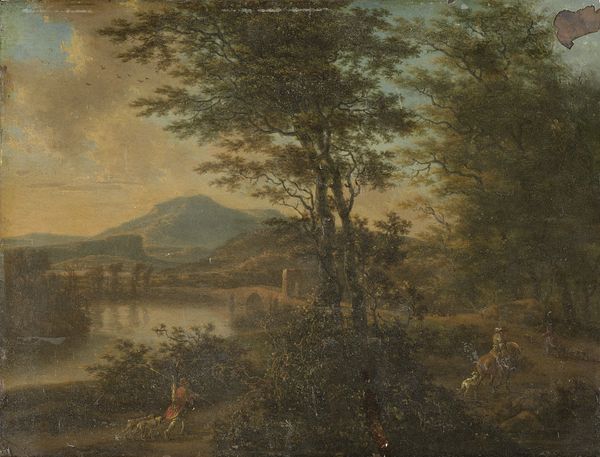
painting, oil-paint, fresco
#
baroque
#
painting
#
oil-paint
#
landscape
#
classical-realism
#
figuration
#
fresco
#
forest
#
history-painting
Dimensions: 37 7/8 x 60 1/2 in. (96.2 x 153.7 cm)
Copyright: Public Domain
Curator: Stepping into this gallery, we find ourselves before Gaspard Dughet's "Imaginary Landscape," likely painted sometime between 1635 and 1675. It’s currently part of the Metropolitan Museum of Art’s collection. Editor: The prevailing mood is a calm, even melancholy. The cool palette—blues and greens primarily—certainly contributes to that. It’s carefully constructed, with these layers drawing my eyes deeper and deeper. Curator: Dughet's known for these classically idealized landscapes. Let’s think about what the 'imaginary' signified then: these aren’t topographical records, but artistic constructions, blending direct observation with established pictorial formulas and styles—influenced a great deal by his brother-in-law, Nicolas Poussin. How labor-intensive this must have been, premised as it was on field sketches, refined workshop drawings, then final application of paint on canvas. Editor: And consider how deeply those classical allusions would have resonated. Notice how the figures are small and almost absorbed into the grander scene. It speaks to the symbolic power of nature, maybe as a metaphor for human destiny or morality during this period, perhaps drawing on religious parables like the garden of Eden. Curator: Precisely, it acknowledges, absorbs, and reflects an audience intimately familiar with those narratives and cultural touchstones. Oil paints themselves were increasingly commodified, as more studios churned out similar scenes. The value lies not just in pictorial skill, but also the implied narrative a viewer brings with them. Editor: To me, the figures almost serve as stand-ins. Their presence encourages the viewer to reflect. Are they lost, contemplating something grand? This piece clearly attempts to reach beyond just being an observation, it makes an active connection. There is the weight of shared histories behind it. Curator: Indeed. I wonder, how many contemporary viewers recognize these historical echoes? Or do they simply see pretty scenery, disconnected from the production? Editor: Perhaps it’s up to us, through conversation and access to the stories behind such paintings, to renew these connections and meaning. I’ve found myself discovering some previously hidden historical information today; haven't you?
Comments
No comments
Be the first to comment and join the conversation on the ultimate creative platform.

